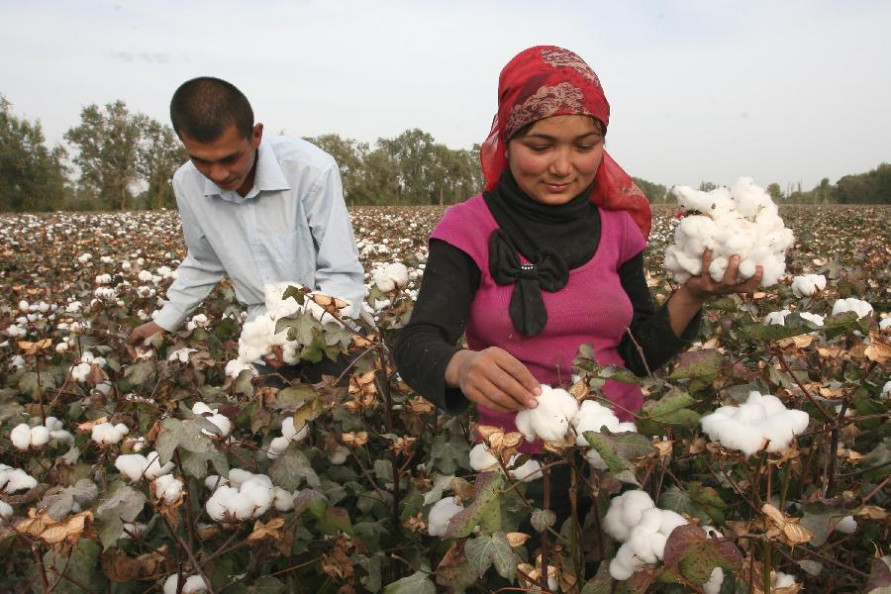| 2019 China state cotton reserves kicked off on December 2, 2019, and ended on March 31, 2020. The planned reserving volumes were 500kt, while the actual reserving volumes were 371,560 tons, with a trading proportion of 47.27%, and trading prices averaged at 13,089yuan/mt. About 12,680 tons of cotton was reserved into Xinjiang warehouses, and 358,880 tons into inland warehouses. 1. State cotton reserves review From December 2 2019 to March 31, 2020, Chinese government has procured 371,560 tons of cotton into state warehouses, and trading prices averaged at 13,089yuan/mt. During the period, the reserves were suspended work on March 2, March 3 and March 23, and no cotton reserved for 19 trading days. In general, trading proportion was low before the Chinese Lunar New Year holiday as sellers were unwilling to sell with the positive outlook towards late market, but with the outbreak of novel coronavirus, cancellation in downstream orders and low cotton demand, sellers intended to sell cotton into state warehouses, leading to higher trading volumes. The charts below show the reserving volumes, trading prices and trading volumes in Xinjiang and inland warehouses.   2. Weekly transactions analysis  The 1st-4th weeks (Dec 2-Dec 27): the trading proportion of reserved cotton has been constantly decreasing. Reasons: 1) There was no big difference to sell cotton to the market or to the state warehouses during the period after charging freight costs and transaction fee. 2) China and the United States signed the first phase agreement and some sellers looked positive towards late market, so most of them were unwilling to sell cotton into state warehouses. The 5th-6th weeks (Dec 30-Jan 10): no reserved cotton into state warehouses. During the period, ZCE cotton futures market has been higher than the ceiling price of reserved cotton, which had no price edge. Besides, the warehouses in Xinjiang were limited, and sellers would consider additional freight costs to inland. The 7th-8th weeks (Jan 13-Jan 23): the trading proportion climbed up slowly, as the price spread of reserved cotton and spot cotton enlarged slowly, and reserving price had advantage. The 10th week (Feb 3-7): the trading proportion reached 98.21%. The reserving prices were higher due to its time lag and downstream mills have not resumed operation fully, and logistics were also restricted, which was not good for the spot cotton sales. The 11th-12th weeks (Feb 10-Feb 21): trading proportion cut to 0%. Part of spinning mills and weaving plants resumed operation slowly, and logistics were also in recovery, so sellers paid more attention to the spot cotton sales. Besides, ZCE cotton futures market rebounded somewhat, so price edge of on-call cotton returned. The 13rd-14th weeks (Feb 24-Mar 6): trading proportion recovered. Zhengzhou cotton futures market experienced steep losses affected by the outbreak of novel coronavirus outside China, and the reserving prices were higher. Besides, sellers faced inventory and selling pressure, and downstream mills have not fully resumed work, mainly purchasing for pressing demand, so sellers paid more attention to the reserves. The 15th week (Mar 9-13): planned purchasing volumes increased to 15,000 tons per day, while trading proportion was not high. The 16th-17th weeks (Mar 16-27): trading proportion increased. 1) Zhengzhou cotton futures market went downward affected by the on-going novel coronavirus outside China, and Chinese cotton textile industrial demand weakened, mills showed low buying interests. In face of inventory and cost pressure, players turned to sell cotton into state warehouses. 2) Reserving prices were higher than ZCE cotton futures. 3) With the end of state cotton reserves, players with high inventory at hand could ease some pressure as demand remained low. The 18th week (Mar 30-31): trading proportion fell down. The ceiling price of reserved cotton declined much, down 900yuan/mt from previous week, while ZCE cotton futures market moved up, so the reserving price had no advantage. 3. Outbreak of novel coronavirus outside China and the state cotton reserves  Recently, the novel coronavirus situation is still accelerating outside China, and the volatile financial and commodity market triggers the pessimistic sentiment in the market. ICE cotton futures market hit a low of 50.68cent/lb. The purchasing volumes of US cotton from China and Vietnam are reducing with the lower orders, so US cotton faces certain consumption pressure. Zhengzhou major cotton contract, May contract, dipped below 10,000yuan/mt on March 24, and downstream spinning mills faced delay of order delivery and cancellation. Traders also faced inventory and selling pressure. In general, cotton market supply is ample, but demand is sluggish. In short, the market will be under the impact of the novel coronavirus and market sentiment will be not optimistic before the turning point of virus. Under such condition, the inventory and selling pressure of sellers can be eased somewhat to sell cotton to the state warehouses. However, the delivery of reserved cotton was extended from 45 days to 70 days from Jan 15, which posed certain impact on the cash flow of sellers. Besides, the package requirement of reserved cotton also influenced the reserving volumes. Therefore, sellers were inclined to sell cotton to the government affected by the virus and low market demand, but due to the issues mentioned above, the trading proportion could not keep high. 4. Reserved cotton inventory
5. Conclusion This round of state cotton reserves has ended on March 31, and reserving volumes total 371.56kt. Currently, the remaining cotton inventory in the state warehouses is assessed at 2.1116 million tons, including 1.74 million tons of old cotton with inferior quality. In general, the state cotton reserves can improve the supply and demand somewhat, but the market is still oversupplied. Without the extension of state cotton reserves, cotton prices are supposed to remain weak. | |||||||||||||||||

2019 China state cotton reserves analysis
Το περιεχόμενο του άρθρου δεν είναι διαθέσιμο στη γλώσσα που έχετε επιλέξει και ως εκ τούτου το εμφανίζουμε στην αυθεντική του εκδοχή. Μπορείτε να χρησιμοποιήσετε την υπηρεσία Google Translate για να το μεταφράσετε.

